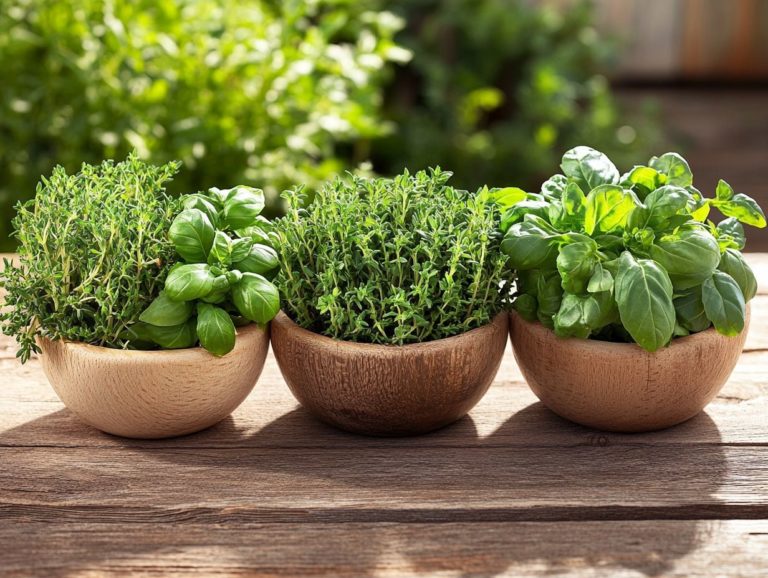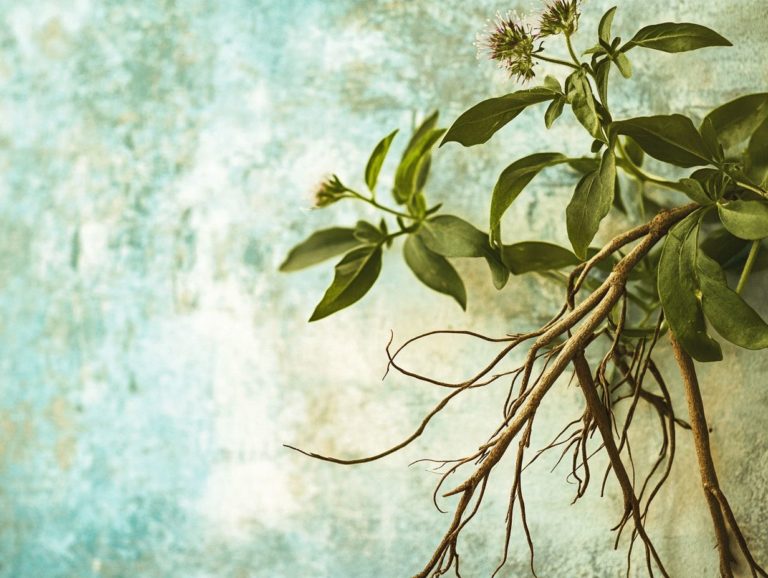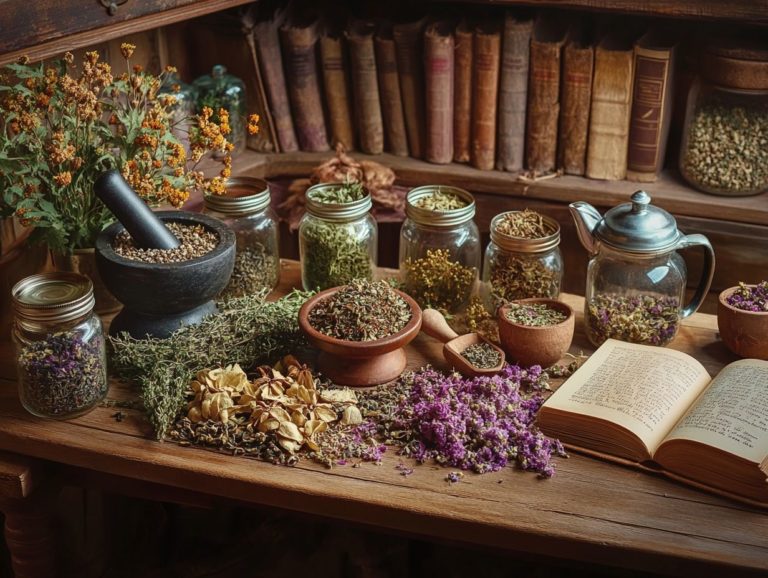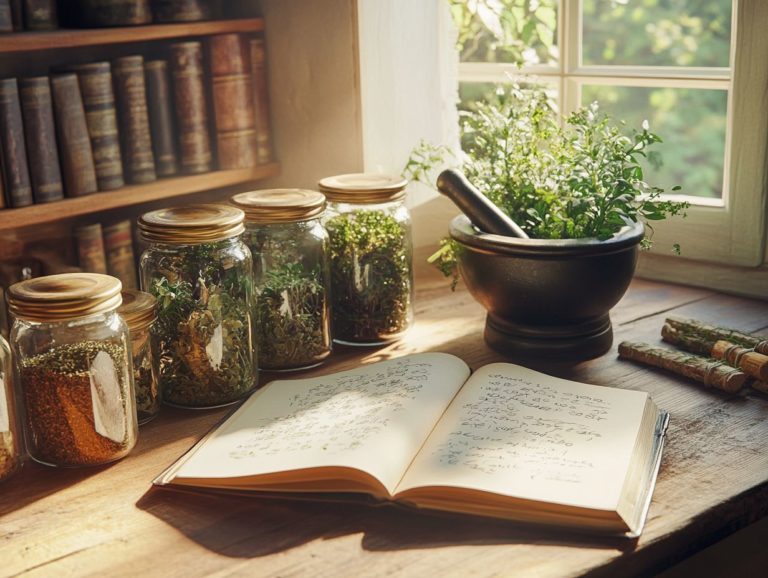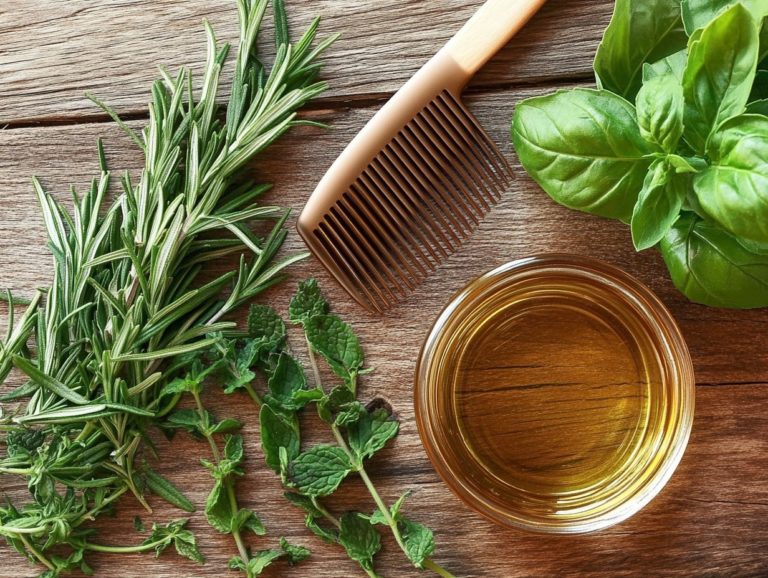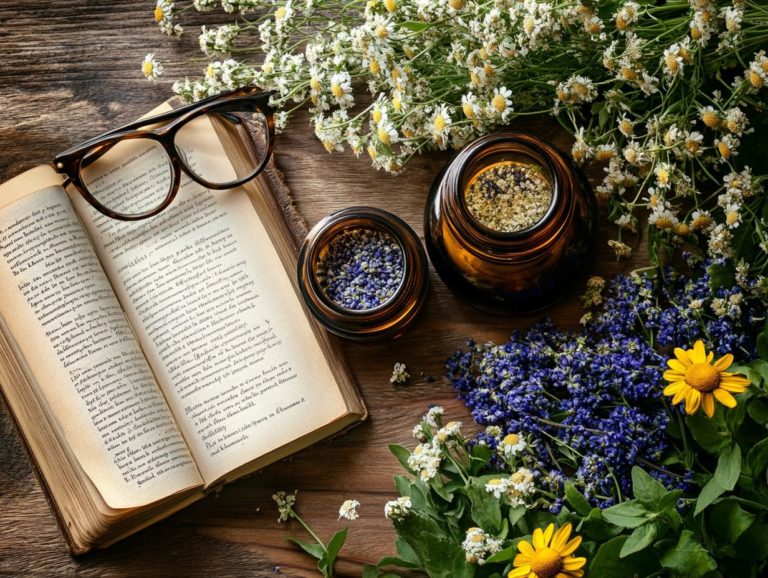How to Make Herbal Infusions at Home
Herbal infusions present a delightful opportunity to tap into nature s benefits. They serve as a soothing alternative to conventional teas and beverages.
In this article, you ll discover the numerous advantages of herbal infusions, ranging from health benefits to practical tips for selecting the right herbs. You ll learn how to prepare these infusions with an easy step-by-step guide, uncover best practices for storage, and identify common pitfalls to avoid.
Whether you re just starting your herbal journey or you re a seasoned herbalist, you ll find valuable insights that will elevate your herbal experience.
Contents
Key Takeaways:
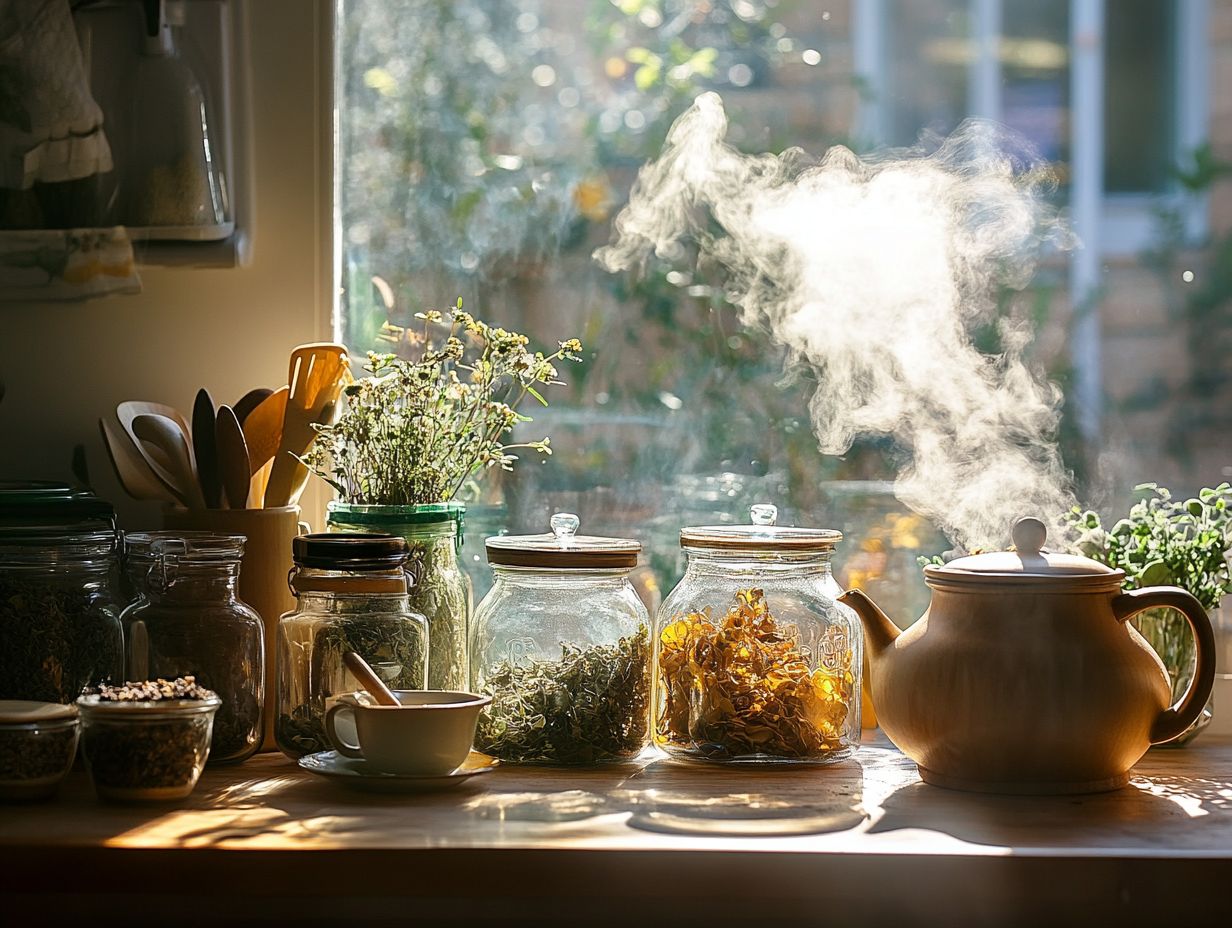
Herbal infusions are a natural and effective way to reap the many health benefits of herbs. When choosing herbs for infusions, consider factors such as flavor, potency, and intended use. Proper preparation, storage, and consumption are key to making the perfect herbal infusion at home.
What are Herbal Infusions?
Herbal infusions are your gateway to concentrated herbal goodness, made by soaking different plants in boiling water to unlock their medicinal properties and rich flavors. This traditional technique is not just a process; it’s an art form that allows you to harness the health benefits of medicinal herbs like aloe vera, peppermint, chamomile, and thyme.
By utilizing this method, herbalists create exquisite blends that promote a natural lifestyle, drawing from a diverse selection of herbs, including red clover, oat straw, garlic, and cayenne pepper. All of these are designed to elevate your wellness.
The infusion journey begins with choosing the right herbs, whether they re fresh or dried. You place them in a teapot or a device used to brew tea, then pour boiling water over them and let them steep for several minutes. This is where the magic happens the flavors and nutrients are released, creating a delightful beverage.
This practice holds great significance in herbal medicine, giving you the power to tap into potent plant remedies for various conditions like stress relief, digestive health, and immune support.
Imagine sipping a calming chamomile infusion to ease into sleep, or enjoying a zesty blend of peppermint and ginger to tackle nausea. Herbalists often create unique combinations, crafting revitalizing mixes like lemon balm, lavender, and honey for a soothing summer drink.
This highlights both the versatility and many benefits of herbal infusions, making them a delightful addition to your wellness routine.
Benefits of Herbal Infusions
Herbal infusions present a wealth of health benefits that are integral to a natural lifestyle. They elevate your overall wellness with the power of various medicinal herbs.
Whether you re soothing stomach issues with chamomile tea or bolstering your immunity with echinacea, the value of these herbal beverages is truly remarkable.
Many herbalists advocate for weaving these remedies into your daily routine, reaping holistic advantages such as enhanced digestion and a sense of relaxation. Embracing these infusions can be a transformative step towards a healthier you.
Health Benefits and Uses
Herbal infusions, like peppermint tea and chamomile tea, are celebrated for their numerous health benefits, particularly when it comes to supporting your digestive system and fostering relaxation.
Take peppermint tea, for example. It’s not just a delight for your taste buds; it’s also a natural remedy for indigestion and bloating, making it an excellent choice for an after-meal drink. Chamomile is revered for its calming effects, helping those who grapple with anxiety or insomnia find a sense of peace.
Don t overlook other herbal blends, either. Ginger tea can be your ally against nausea and can enhance circulation, while hibiscus tea may assist in maintaining healthy blood pressure levels.
By regularly incorporating these herbal remedies into your daily routine, you’re not just nurturing your physical health; you’re also paving the way for a more balanced lifestyle.
Embrace the benefits of herbal infusions today! Try making your own herbal infusions for personal wellness.
Choosing the Right Herbs for Infusions
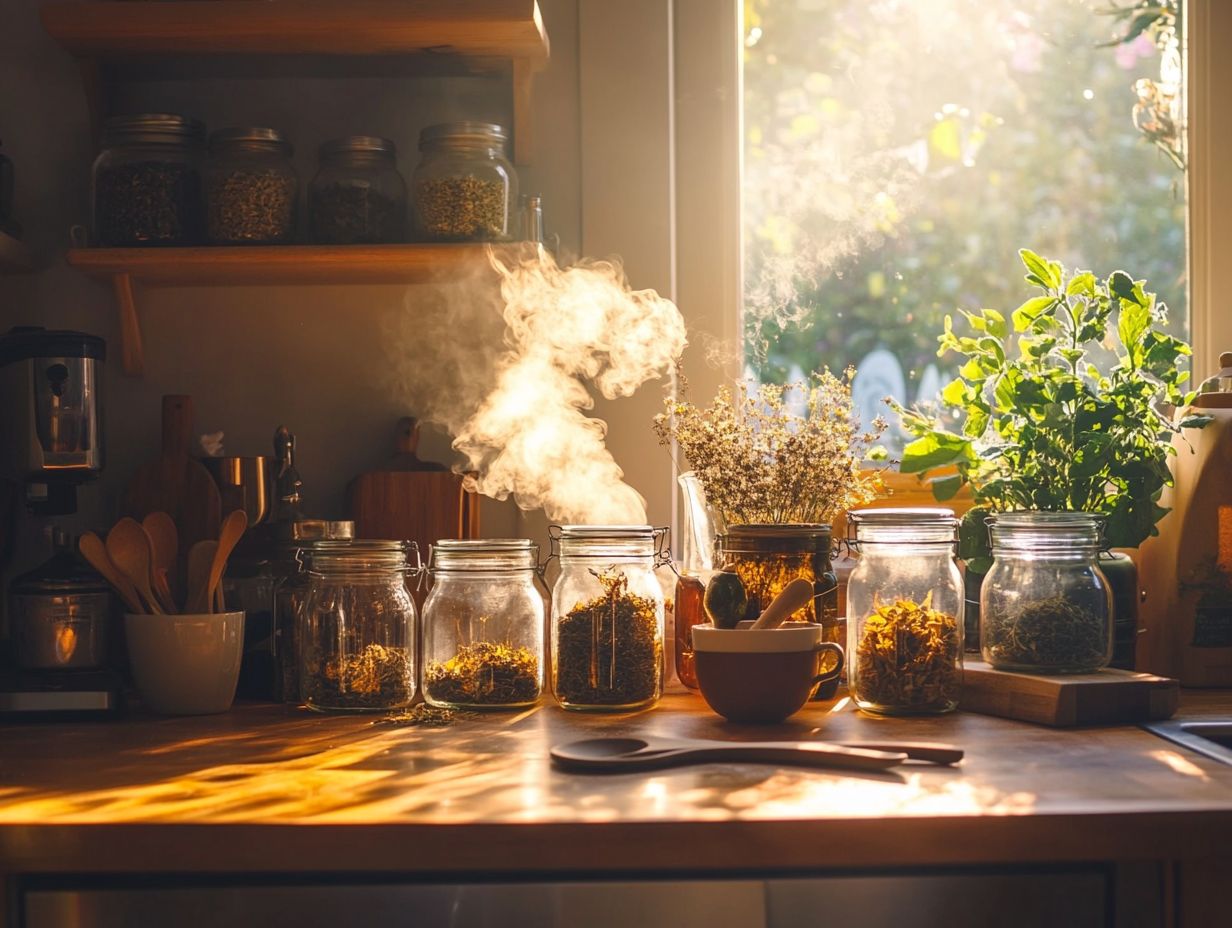
Selecting the right herbs for your herbal infusions is vital for unlocking their full health benefits while achieving a pleasing flavor.
As you explore herbalism, you’ll find many cooking herbs that can also heal.
Creating personalized blends tailored to your health needs transforms the infusion process into an art form. Understanding your choices is an essential step on your journey to wellness.
Factors to Consider
When choosing herbs for your infusions, consider factors like the health benefits you want, flavor compatibility, and how to make herbal drinks. Understanding these elements helps you make enjoyable and effective herbal remedies.
If you re looking for stress relief, you might prefer herbs like chamomile or lemon balm, known for their calming effects. Your flavor preference is also important; a pleasant taste motivates you to stick with your routine.
Different herbs vary in how long to let them sit in water. Some need longer to unlock their benefits, while others work quickly.
By keeping these key factors in mind, you can create personalized herbal blends that align with your health goals, integrating satisfaction and wellness into your daily life.
Preparing Herbal Infusions
Making herbal infusions is a fun and easy way to enjoy the healing power of plants. If you’re interested in more detailed methods, check out this guide on how to prepare herbal remedies at home. The process begins with boiling water, setting the stage for your flavorful creation.
The steeping time may vary depending on the herbs you choose, but following proper techniques ensures delightful herbal blends that can enhance your well-being.
Step-by-step Guide
Use this step-by-step guide to easily master making herbal infusions, starting with boiling water and carefully selecting the right herbs for your recipes. Paying attention to how long to let the herbs sit in water is essential; it s the secret to extracting maximum flavor and health benefits.
- First, think about the flavors or health properties you want in your infusion. Popular choices include chamomile for relaxation or peppermint for aiding digestion.
- Once you ve settled on your herbs, measure out the appropriate amount typically about one tablespoon per cup of water.
- Next, bring your water to a vigorous boil, then let it cool slightly to just below boiling to preserve the delicate essence of the herbs.
- Pour the hot water over your prepared herbs in a teapot or heatproof container. Cover it and allow your infusion to steep for the recommended time, usually between 5 to 15 minutes, depending on the herbs you’ve chosen.
Don t forget, experimenting with different combinations can lead to amazing, unique herbal recipes that you’ll love!
Storing and Using Herbal Infusions
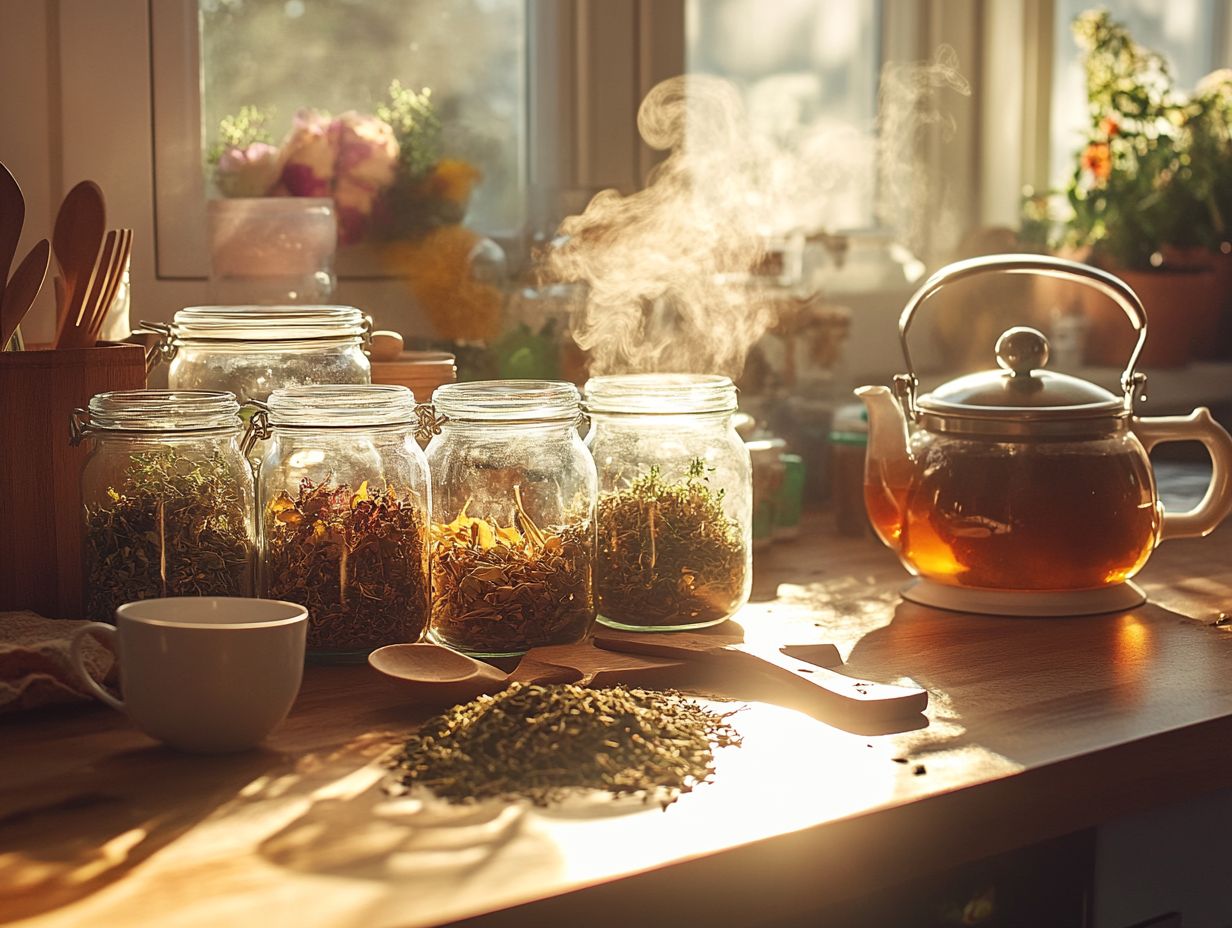
Storing and using herbal infusions correctly is vital for preserving their longevity and ensuring you fully enjoy the benefits of these natural remedies.
By following best practices for storage and consumption, you can elevate your experience and unlock the maximum effectiveness of your herbal beverages.
Feel free to share your favorite herbal infusions or experiences in the comments below!
Best Practices for Storage and Consumption
Best practices for storing herbal infusions focus on using airtight containers. Keep them in a cool, dark place to maintain their longevity and potency.
Glass jars with dark-tinted exteriors are excellent for protection, shielding your herbal concoctions from harmful light. If you prefer convenience, silicone pouches designed to keep moisture out can also be highly effective.
Keep your containers away from direct sunlight and humidity to preserve the delicate flavors and nutritional benefits of the herbs. Regularly check your infusions for signs of spoilage and aim to consume them within a few months of preparation to fully enjoy their benefits.
When properly prepared and stored, herbal remedies offer a natural way to feel better, seamlessly integrating into your daily routine through teas, tinctures, or culinary delights.
Common Mistakes to Avoid
Avoiding common mistakes in preparing herbal infusions is essential for achieving the perfect blend. These not only maximize health benefits but also delight the palate.
Many individuals overlook key steps, undermining the efficacy of their herbal remedies. By paying attention to these details, you can elevate your infusion game, ensuring wellness and enjoyment in every sip.
Tips for Making the Perfect Herbal Infusion
Crafting the perfect herbal infusion requires attention to detail and a commitment to specific tips. From selecting the right herbs to timing the steeping period, every step in the process plays a vital role.
Consider the unique properties of various herbs. For instance, chamomile is renowned for its calming effects, while peppermint invigorates the senses. Using the freshest herbs enhances both taste and nutritional value.
The steeping time is also crucial. Lighter herbs typically require 5-7 minutes, while sturdier varieties thrive with a longer steep of 10 to 15 minutes. Experiment with flavor combinations like mixing lemon balm with hibiscus or blending lavender with honey.
Such pairings can elevate your experience, making it refreshing and genuinely therapeutic.
Frequently Asked Questions
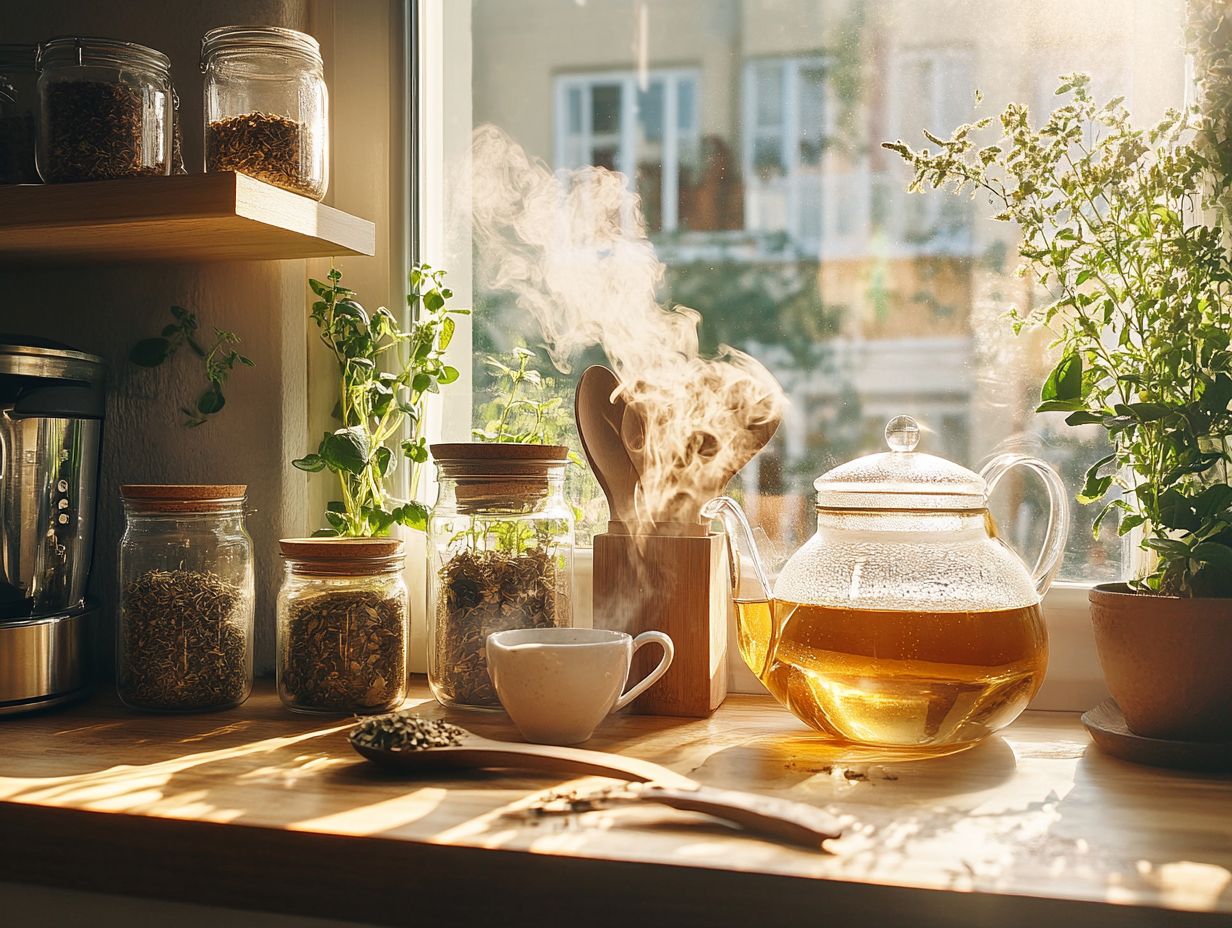
Curious about herbal infusions? What is a herbal infusion?
A herbal infusion is a drink made by steeping dried or fresh herbs in hot water, allowing the beneficial properties and flavors to infuse into the water.
What are the benefits of making herbal infusions at home?
Making herbal infusions at home gives you control over the quality and freshness of the herbs. You can also learn how to prepare herbal remedies at home to customize flavors and create blends that meet your specific needs.
What are some common herbs used in herbal infusions?
Common herbs include chamomile, peppermint, ginger, lavender, and nettle. Always use high-quality, organic herbs for the best results.
What equipment do I need to make herbal infusions?
You will need a teapot or heatproof container, a strainer, and a cup or mug. A tea infuser or muslin cloth can also be used for steeping loose herbs.
How do I make a basic herbal infusion?
Boil water and pour it into a teapot or heatproof container. Add 1-2 teaspoons of dried herbs or 2-3 teaspoons of fresh herbs per cup of water. Let it steep for 5-10 minutes, then strain and enjoy.
Can I sweeten my herbal infusion?
Absolutely! You can add natural sweeteners like honey or maple syrup for added sweetness. Lemon or lime juice can also bring a zesty flavor.
Ready to dive into the world of herbal infusions? Start experimenting with your blends at home!

